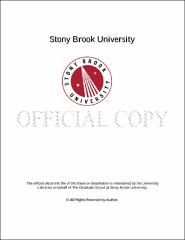| dc.identifier.uri | http://hdl.handle.net/11401/76897 | |
| dc.description.sponsorship | This work is sponsored by the Stony Brook University Graduate School in compliance with the requirements for completion of degree. | en_US |
| dc.format | Monograph | |
| dc.format.medium | Electronic Resource | en_US |
| dc.language.iso | en_US | |
| dc.publisher | The Graduate School, Stony Brook University: Stony Brook, NY. | |
| dc.type | Thesis | |
| dcterms.abstract | Zebrafish transgenesis is conventionally performed via the tol2 transposable element system as it is the most straightforward, providing quick and easy transgenesis. Despite being commonly used in the zebrafish community, tol2 mediated transgenesis has issues that cause workflow slowdowns and delays. The biggest of these issues are the random nonspecific integrations which can occur multiple times within a genome. In order to generate a stable transgenic line with a single insertion, one must perform several generations of outcrosses and subsequent screening. Thus, while tol2 transgenesis is effective at generating founder animals, a considerable amount of time and labor is required later to isolate a single insertion line. A promising alternative is the use of phiC31 integrase, which follows the same workflow yet provides a single specific integration, removing the need for subsequent outcrossing. Unfortunately, this does not appear to be as easy and revolutionary as would be expected. The efficiency of phiC31 integrase was known to be lower than tol2, yet out of six different plasmids injected numerous times using different aliquots of phiC31 integrase mRNA, no positive insertion has ever been found. Although insertion appeared evident at first, further experiments showed that this was not the case. This method may still be useful but future evaluations will need to be conducted. | |
| dcterms.available | 2017-09-20T16:51:23Z | |
| dcterms.contributor | Martin, Benjamin L | en_US |
| dcterms.contributor | Matus, David Q | en_US |
| dcterms.creator | Scortea, Andrew | |
| dcterms.dateAccepted | 2017-09-20T16:51:23Z | |
| dcterms.dateSubmitted | 2017-09-20T16:51:23Z | |
| dcterms.description | Department of Biochemistry and Cell Biology | en_US |
| dcterms.extent | 30 pg. | en_US |
| dcterms.format | Application/PDF | en_US |
| dcterms.format | Monograph | |
| dcterms.identifier | http://hdl.handle.net/11401/76897 | |
| dcterms.issued | 2016-12-01 | |
| dcterms.language | en_US | |
| dcterms.provenance | Made available in DSpace on 2017-09-20T16:51:23Z (GMT). No. of bitstreams: 1
Scortea_grad.sunysb_0771M_13166.pdf: 1025904 bytes, checksum: 0f5243aa6b17391800b94f4630065bff (MD5)
Previous issue date: 1 | en |
| dcterms.publisher | The Graduate School, Stony Brook University: Stony Brook, NY. | |
| dcterms.subject | Biology -- Cellular biology | |
| dcterms.subject | PhiC31, Transgenesis, Zebrafish | |
| dcterms.title | PhiC31 Integrase as a More Efficient Method of Transgenesis in Zebrafish | |
| dcterms.type | Thesis | |

